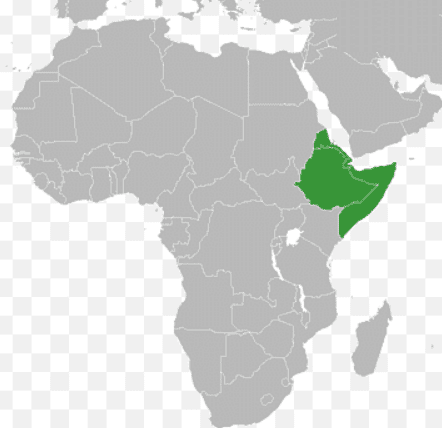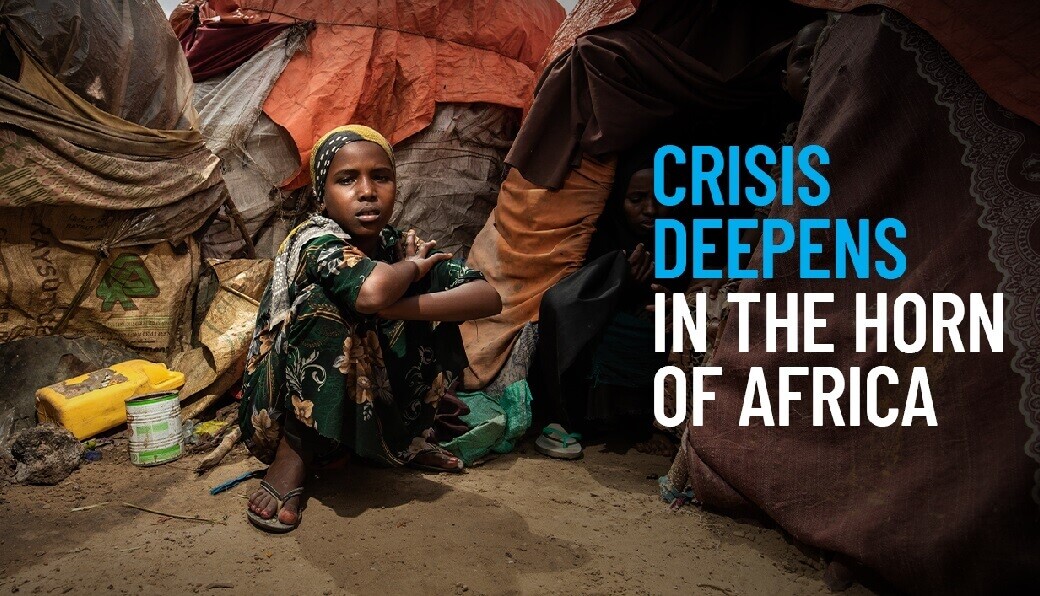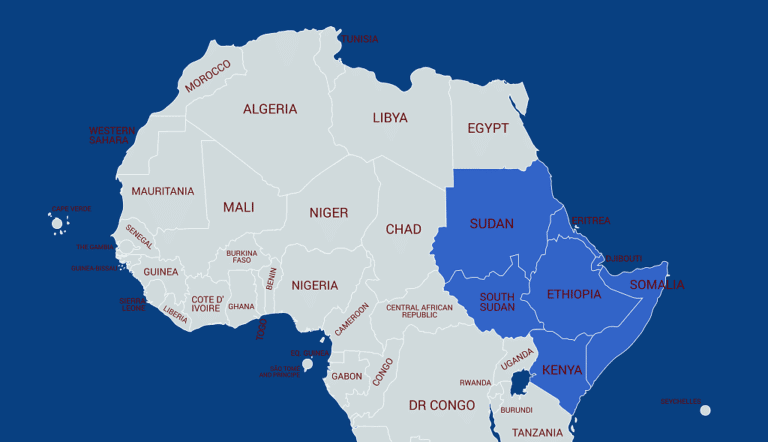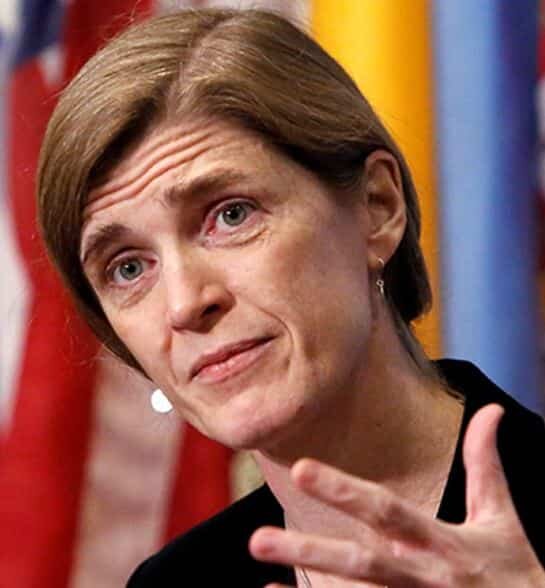By Dr. Suleiman Walhad
July 18th, 2022

The Horn of Africa States region remains strategically important for it straddles one of the most important seaways and airways of the world. The people of the region also know that despite its significance, it is marred by ethno-based conflicts, no one knows how they started or how to stop them or whether it is generally desired to have such conflicts stopped anyway. Even a very homogenous state like Somalia has ripped itself apart because of clan/family related matters for the country has none of those excusable things that people fight over such as religion, language, color, culture, ways of livelihoods, history or anything else. Somalia, indeed, is one country that should not have any such worries for they are of the same stock, religion, language and culture and they are all intermarried and related to each other throughout the Somali inhabited areas of the Horn of Africa. Yet the country has been tearing itself apart for some thirty odd years without an end on sight. And so has every country in the Horn of Africa States region! This tribal disease has proven to be a wily one without cure to date as much as cancer is in a biological body.
And more recently piracy, international terrorism, climate change, poverty and all the traditional ills of any society has been added on to the problems of the region, which led to, other than many more issues, problems and challenges on transport and ability of people, capital, goods and services to move freely throughout the region. Fake nationalisms and artificial borders left over from the presence of colonial Europe remain and continue to hamper proper development of an efficient transportation system and infrastructure in the region.
The largest population and the largest landmass of the region belongs to Ethiopia and yet all the coasts of the region are in the other three countries. Most of the wealth, at least as current statistics indicate, are also in Ethiopia, while the other three countries all have lesser weight when it comes to the size of the economy. Yet when the region is put together, it poses a sizeable market as an economic actor that can produce not only food for the region but sizeable wealth for all to share and live off comfortably. The long coasts of the region are what makes the region important, in addition, to the Nile waters that follow out of the region and sustain many millions more downstream and those assets can contribute to a substantial wealth for the region, but only if, the region’s population was to realize how much it could benefit if it just put to a stop this ethnic clashes. Wiilwaal, a historical Somali personality of Ethiopia is reported to have once noted, “That the only way to subdue a man is to welcome and/or receive him as a brother.” Wiilwaal was one of those that Somalis call “the men of men” i.e., leaders of men, Raximahu Allah.
One of the major factors to the building of wealth is transportation for if one cannot transport one’s goods and wares to the market or bring them from the market, it ends to naught. Transport includes many industries such as ports both air and sea, roads and rail, shipping and trucks, aero planes and river transport and in fact every aspect of life from local markets to markets beyond the region. And transportation of the Horn of Africa States remains underdeveloped despite the existence of several major ports and few roads linking the coastal belts to the interior or some air transport. The region needs to address and redress this situation, if it has to build a viably growing and expanding economy that can lead to a sizeable growth of wealth. Even the powers that be in the world only talk about transportation as the key economic factor. They do not talk about the IT world or the iron industries or even agriculture or fishing and so on. We know of China’s One belt One Road Initiative or the “Build Back Better World” infrastructure projects of the United States. Transportation is like the arteries and veins of the blood system that feeds every cell in a body and without transportation the component parts of a system would not work efficiently.
It is why the Horn of Africa States region should not expand the existing infrastructures but also improve and expand them and add on to them more efficient ones. Why shouldn’t there be a a rail and road system linking all the region from its southern tip of South Somalia to the northern tip of Eritrea or from Ras Aser on the Horn of Africa in the East to the furthest west region of Ethiopia? The only major obstacle to such a project is the fake nationalism implanted into the psyche of the people, where people stick to false lines created by Europeans barely a century ago, which can also be removed or abused for they can symbolically stay for administrative purposes but ignored and allow investments and capital flow one country to the other and hence goods and services and the related infrastructures. It should be the way of the future and the leadership of the region both the ruling elite and the opposition waiting in the wings should work together towards an economically integrated region where all member countries benefit. They should at least all agree on that and not damage the future of the children of the region.
An understanding of this nature among the ruling elite and the opposition, would definitely reduce tensions within each country and the region in general. This would allow trade to flourish and especially across the region where the people are all of the same stock. Traditional idiosyncrasies and prejudices would be removed as recent closer relations among the Horn of Africa States region attest. The region can then exploit together its resources such as power and energy of the Ethiopia Grand Renaissance Dam or the long coasts of the region and the substantial other potential wealth creators of the region. It would need to establish major infrastructures and benefit from those who are prepared to assist in the process:
- Multiple Corridors from the region’s coasts to the interior involving not only discharge ports of cargo but also rail, road and air transportation,
- Multiple Dry Ports to ease congestion of seaports and airports and dry docks to repair ships and/or build ships.
- Fundamentally easy processing of cargo transport across the region, i.e., efficiency in prcoessing, lesser financial burdens and application of latest technologies
- Collaboration of the major economic actors of the region, such as the financial and banking systems, the legal firms, the accounting firms, other industries and in general the various chambers of commerce of the region.
- Build a huge blue economy as well as a green economy not only to feed the population but also to develop all sea related businesses and infrastructures such as hotels for tourism, yacht clubs, water sport facilities and exploitation of non-food resources of the seas and ocean of the region.
- Do away with multiplication of efforts and other wasteful processes and organizations.
One of the major challenges of transportation development is the cautionary approach of the region to foreign investments and obviously any heavy investment in infrastructure and transportation in the region would require long term funding in substantial amounts. The region presently cannot provide such funding or obtain them through borrowing. It is perhaps time that the region’s leaders and population took to heart that any investment made in the region in infrastructure cannot be removed once built and should therefore allow those with funds to invest in the region for years to be agreed upon and hence acquire some returns that are worth the original investing to the investors, that is, they must share in the profits generated from the investment or repay such investments with returns over an agreed period acceptable to both parties.
As a banker, I know our worst nightmare and for that matter any investor is losing a proposition financed. Lending or financing and investment i.e., giving away money to others for a purpose is the easy part but recovering it is the difficult part of money and finance. We always consider a proposition for any weak link that may result in the borrower not repaying his/her obligations. It is why we look for other sources to support the repayment process of the borrower in the form of guarantees, collaterals and even sometimes monitoring a situation from remarkably close quarters almost involving co-managing the project with the borrower.
The region because of its strategic location also attracts others such as the Arab region from Egypt to the Gulf who consider it as part of its security belt. The Horn of Africa States should understand their concerns for no one knows when the position could be reversed, and the Horn of Africa States would be considering the Arab region as part of its security belt. A common platform could be worked out to create a win-win accord for both parties. Again, in this respect, we must also consider the bigger powers and the region should not appear to be knee-bent to one side or another. The region should not be drawn as happened in the past, to take sides. It has paid a heavy price for the old mistakes, and this should not be repeated.
They say in East Africa, “When two elephant bulls fight, it is only the grass that gets trampled”.
*Dr. Walhad writes on the Horn of Africa economies and politics. He can be reached at walhad@hornafric.org






















As usual a well thought out article by the dear author. It is devoid of any notion of clan superiority. Inter ethnic and the lower stacks of inter clan clan have existed in that part of the world and entire Africa for that mater for ages. But they used to be confined to small localities and lasted for brief moments. They were manageable and elders could put a stop to any of them in heartbeat. But lately in our time particularly since the mid 1960’s they started to be issued handbooks. Those handbooks were written by those who were infected by imported toxic ideology totally alien to the region. The handbooks contained incendiary narratives that painted other ethnic and clan groups as mortal enemies. The mediating power of elders was eroded the role of the barrels of the gun became the only problem/conflict solvers. The Holy Scriptures were shunned and replaced by those who raised the name of Our Creator in vain. Then human blood started to flow everywhere. Many regions went up in flames leaving behind killer generations that takes human blood as a budding red rose. The level of brutality left many of us scratching our heads as to where these brutes came from. To this day I have refused to see them as Somalis because the Somalis I know and grew up with are none of it. I refused to recognize them as Amharas, Afars, Tigre’s and my own Oromos because they are none of what I know first hand about all of them. The killings have been carried not localized cattle rustling but they have been committed in the name of ‘liberation’. Somalia, Wellega and Tigray went up in flames. There have been a ray of hope when I noticed the fact that my dear Somali and Afar brothers and sisters have found their mojo to put a stop to what looked like an all out bloodletting for silly reasons. I profusely commend them for that. The rest of the region should learn a thing or two from them about finding temporary or permanent conflict resolutions. Enough already with senseless destruction and bloodletting. Enough, enough and enough!!!!
Make that: It is devoid of any notion of clan superiority. Inter ethnic and the lower stacks of inter clan conflicts…